Hotel Imperial (1926)
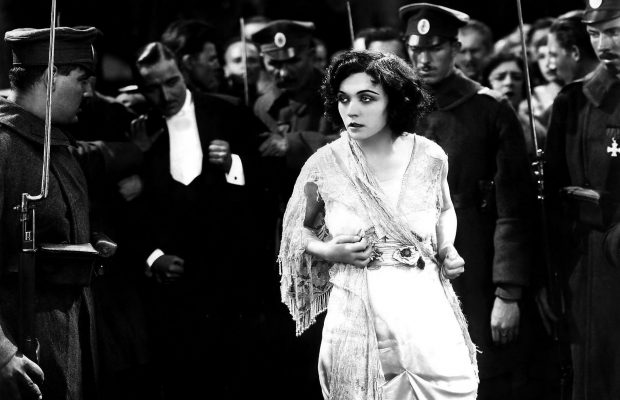
Toronto Film Society presented Hotel Imperial (1926) on Monday, April 5, 1965 as part of the Season 17 Monday Evening Silent Film Series, Programme 6.
~~~~~~~~~~~~~~~~~~~~~~~~~~~~~~~~~~~~~~~~~~~~~~~~~~~
Two films made in 1926
When a Man’s a Prince (2 reels)
Author: Mack Sennett
Copyright: Pathe Exchange, In., 28 April 1926
Hotel Imperial (7 reels)
Released by Paramount Pictures
Producer: Erich Pommer
Director: Mauritz Stiller
From the novel by Lajos Biró
Screenplay: Jules Furthmann
Starring Pola Negri
Original length: 7,091 feet
Copyright: Famous Players-Lasky Corp., 26 Feb 1927
* * *
“Stiller made his first American film under the supervision of the one-time head of Ufa, Erich Pommer, then newly arrived in Hollywood. The result was mixed. Pommer had eight complete connecting rooms built on the set so that the moving camera might follow the characters consecutively, and in order to experiment with angle shots. Pommer’s methods gave smoothness to an otherwise routine starring vehicle but the chief merit of the production is the opening sequence, directed by Stiller in the quite different Swedish style of which he was a master”. (MMA notes)
Mauritz Stiller was the great Swedish director who, along with Victor Sjöström (Sestrom), gave greatness to the Swedish Film in the ‘teens and early ‘twenties. (Ingmar Bergman owes more to those films than is generally realized). Stiller’s films The Treasure of Arne (1919) and The Story of Gosta Berling (1924) have been shown in earlier Silent Series seasons. It was he who discovered Greta Garbo, and the two of them were signed up together by MGM in 1925. Linguistic and other difficulties caused him to be taken off his first film for MGM, but Paramount, at the insistence of Erich Pommer, borrowed him from MGM and used him for this film (which was a box-office success) and two others (which weren’t), after which he quarrelled with Paramount and returned to Sweden, where he died in November, 1928.
* * *
POLA NEGRI was born somewhere in Poland on January 3, 1897. (At least, this was the date given out around 1925 and since; but two or three years earlier, fan magazines were informing enquiring readers that she was then thirty). Her Italian surname is a non de théätre, borrowed from an italian poetess, Ada Negri, whom she admired. Her given name was Appolonia, hence Pola. It is said that her father was a gypsy, wich might account for her blue-black hair. It is also said that she was a member of the Russian Imperial Ballet, which may be true, but we are inclined to doubt it. We have seen only one picture that revealed Pola Negri’s legs, and it explained why she was normally photographed wearing long skirts. The Russian Imperial Ballet never accepted pupils who were not physically perfect.
Still, she seems to have been a dancer at some time in her career; but it was as an actress that she began to achieve success, at first in Warsaw and later in Berlin under Max Reinhardt. She went into films there shortly before the end of the war (the UFA company was set up in 1917 with the aid of government subsidies), and appeared in several of the films directed by Ernst Lubitsch.
One of these, produced in 1919, was Madame DuBarry, with Emil Jannings as Louis XV, which First National released in North America the following year under the more box-office title of Passion (in Alberta it was chastely retitled Passion to Win), and was an enormous success, both critically and at the box-office. On the strength of it, numerous other German films were brought over, particularly anything with Pola Negri in it. Of these, the most outstanding were Carmen (released as Gypsy Blood) and Sumurun (released as One Arabian Night), both directed by Ernst Lubitsch.
The continental sophisitication of all these German films made a strong impact on post-war American audiences who were hungry for just such sophistication. It was excitingly refreshing to see Carmen as a gypsy slut instead of a cleaned-up opera star, and DuBarry living in sin and loving it, while the cynical look at the private lives of kings and queens appealed to the Strachey era of debunking history.
Pola Negri’s popularity, on the strength of her imported German films, was so great in North America that in 1922 Paramount signed her to a starring contract, and she thereby became the first foreign star to be imported by Hollywood,–the much-publicized first in a trend that continued throughout the 1920’s, successfully denuding the German and Swedish studios of all their best talent: actors, directors, cameramen, et al. (If you can’t lick ’em, swallow ’em!)
Thus, Negri began her Hollywood career with an enormous following of admirers; and her enormous prestige (not to mention her knack for getting into the newspapers) made her the immediate Queen of Hollywood (with a few royal rivals such as Paramount’s own Gloria Swanson, who eventually had to be transferred to their New York studios); but her popularity was soon dissipated by a succession of weak films, beginning with her first one, Bella Donna (March 1923). Apart from not being good films, they didn’t even have the merit of exploiting her personality. Not till she was reunited with Ernst Lubitsch in Forbidden Paradisse (Nov 1924) did she come up with a worthy successor to her European films; but this was never followed up.
By 1925, Photoplay Magazine‘s columnist, Herbert Howe, was writing: “I’m worried about Pola Negri. By plucking her eyebrows, sleeking her hair and washing her face she is rapidly becoming a movie version of herself, just as Nazimova became a bad adaptation of the great Alla. Pola out to go out and roll in the mud until she feels like Carmen all over again”. Which probably summaries what happened to Pola Negri in Hollywood.
In 1926-27 she made two excellent films under Mauritz Stiller, Hotel Imperial and A Woman on Trial, and what was probably her greatest American film: Barbed Wire; but by then it was too late. In 1926 Pola Negri and Rudolph Valentino had been ardently holding hands, and avid readers of fan magazines were momentarily expecting an official engagement notice, when Valentino died suddenly in New York. Negri immediately suspended work on her current film (which, as it happened, was Hotel Imperial) and rushed to New York to attend the funeral. Flamboyant personality that she was, she overdid the grif bit and made an unfortunate spectacle of herself. Those few who gave her the benefit of the doubt and did not assume it was all a cheap publicity stunt felt themselves betrayed when, less than a year later, she suddenly married a Georgian prince (becoming thereby the sister-in-law of Mae Murray, who had married his brother). All in all, it was bad public relations, and it finished what was left of her waning popularity.
In the December 1928 issue of Photoplay Magazine there appeared an unusually blunt and outspoken article by one Leonard Hall, which (if you’ll make allowance for his Nathan Cohen-like tendency to sacrifice accuracy for the sake of a vivid phrase) offers a contemporary diagnosis of Pola Negri’s ill-fated Hollywood career. Here (slightly abridged) is his article, which he calls:
THE PASSING OF POLA
The Warsaw Rose has faded. Pola Negri seems to be through in American motion pictures.
With that woeful wilting there flits from the Hollywood scene the wraith of a sparkling artist gone flat like yesterday’s Vichy–a true tragedy of the sunlit stages. Portents of Pola’s passing have burned in the western sky for months. In St. Louis a showman refused to bill the star’s name above that of her late picture, The Loves of an Actress, remarking that her title didn’t mean a Canadian dime at the fateful wicket that makes and breaks the players. Broadway leered and whispered that the same picture had fizzled miserably at the famous Rialto Theatre, where the display of Emil Jannings’ name is enough to call out police reserves with ropes and nightsticks. “It won’t be long now!” whispered the wise ones. And it wasn’t.
Negri’s long Paramount contract finally staggered to the tape, fell across the finish line, and died. For five unhappy years she had pulled a jeweled oar in the Zukor-Lasky galley. In the home stretch her weekly pay envelope was bloated to the tune of $8,000. As the contract breathed its last, the Perilous Pole grew wistful. She became sweet and tractable, and the word “yes” came easier. Pola forgot her dream of $10.000 a week and hinted that she would be happy to go on grimacing for the old fee.
But the pontiffs of Paramount turned gentle, and a little deaf. They smiled sadly, and opined that $8,000 was right smart money for a–shall we say?–difficult star whose American drawing power had shifted to the wrong side of the decimal point. And with nods and sighs they turned back to the bulging box office statements on the latest Clara Bow pash opera.
Then came word that Negri was returning to the old country to make pictures, and again the boys smirked knowingly. To them the emigration of a great star means but one thing–its setting. As old baseball pitchers, the soup-bones rusty, are put to graze i the pasture of the minor leagues, film stars seek the studios of the old world when they can no longer put the old hop on the ball.
And so, packing her jewels, her pretties and her princelet, Pola passes, leaving in Hollywood only the memory of a flame woman that turned to ice almost oernight; and died, artistically, long before her time.
Behind the tragedy of Pola Negri’s complete American failure lies a woeful succession of errors of omission and commission that admirers are prone to blame for her lamentable flop. What was the cause of the artistic nose dive taken by one of the greatest hopes of the photoplay? Let us follow her from gangplank to gangplank.
Pola Negri came flashing into Hollywood like a queen on the success of Passion, when in reality she was only a crown princess, her American throne yet to be won by force of camera. Paramount stepped on its own bunions to honor the royalty from overseas. She was oversold.
The fiery temperament that should have blazed in her Yankee films exploded all over the stages. She queened it across the Lasky lot, she bickered over studio precedence with Gloria Swanson, she played ‘possom at benefits when other stars were lending a hand in a good cause. Director after director, shirt tails afire, fled bawling from the Negri set. Many have blamed Pola’s collapse on her boiling Polish blood–yet other equally skittish stars have grown fat and famous. Others have put the burden of blight on her stories–yet the whole writing world was combed for Negri’s yarns, and those accepted required the approval of the star before the Kleigs flared on.
No–the reasons for Pola Negri’s decline and fall from fan favor go far deeper than these things. Her firework displays should have helped and not hindered her American career–the Negri of her golden days should have flashed through the stories that came her way after heartbreaking search. Pola Negri’s failure was a failure of the mind and spirit.
The Negri that stunned us in Passion was a taut, tense, burning Negri. In her eyes was the look of eagles–she had the air of a finely trained athlete straining for the sound of the gun, eager to be off and away.
Then came the royal progress to Hollywood, and a sea change, mystic and terrible. Tiffs on the set and the trying on of tall millinery–delusions of grandeur and trying mental and spiritual readjustments in a new and difficult world. All these things warped Pola Negri’s mind and put calluses on her immortal soul.
Do you remember the shock when her first American film, Bella Donna unrolled before our horrified eyes? Gone was the lean, fiery woman who had set ablaze with her genius the screens of the world. Filled were the faint hollows in her cheeks, and smoothed the rebellious hair. In her place we found a smart, sleek, corn-fed beauty who stalked almost arrogantly through the purple passages of Robert Hitchens’ romance.
That was a dark hour for us who had hoped the best and finest from the astonishing Pole. We had expected a tigress-we got a placid, poised and beribboned Persian house cat, all coat and no claws. We looked for a three-alarm fire–all we received was a dull smudge. Pola had gone upper case and domestic, and with her going went her passionate greatness, with all its verve and flame.
Picture followed picture, and Pola simmered but never flamed. We felt badly. What is worse, we felt cheated and let down. Where was the red hot star we had laid our pence on? Pola Negri never recovered, for more than a few isolated minutes, from the artistic tragedy that was Bella Donna. Her very first Hollywood effort, oddly enough, was the beginning of the end.
As the star realized that things were very wrong, it added to her spiritual confusion. She looked hunted. She was followed and haunted by the dogged hoofbeats of inevitable failure. And it wasn’t long, as careers go.
What had happened? Simply that Pola Negri had taken her self-coronation too seriously, forgetting that the great star is only the servant of the millions. She had become, thanks to coddling and inflated ego, the self-conscious Great Artist–all oblivious of the fact that the true artist, and truly beloved entertainer is the one who, casting away all thought of self-pride, hurls herself passionately into her work for God, for Country and for Yale.
No one is quicker to sense a change in the personality of a favorite film player than Mr. Ardent Fan, and that keen gentleman sensed the new Negri instanter. He wanted a passionate princess and he caught a queenly clothes horse, the like of which roams wild and wholesale in the Hollywoods… We wanted a ball of fire and we found a cake of ice. We had queens of our own, just as beautiful and as smartly togged. And we sniffed, and passed Pola by on the other side.
Toward the close of Pola’s Paramount career things went from worse to terrible. Her grief-stricken hullabaloo at the death and funeral of Valentino. Even her sturdiest admirers thought it in bad taste, and didn’t scruple about telling her so, with gestures. A public wearied to the snoring point by press reports of her loves and longings didn’t even snort in its sleep at her marriage to one of the Mdivani boys. Negri, alarmed and wistful, was swept along on a swift ebb tide out to American oblivion. And so Pola fades away from the front-line rank of American stars.
She may do more work among us. We may see her in films fromt he other side of the sea. But the golden chance i gone, and she is almost as dead as the conventional dodo.
Pola Negri’s American failure is one of the major tragedies of our motion picture history. We expected so much of this wonder woman, and got so little. From the pigeon-holes of our minds we pull dusty memories of a lithe, hungry-looking girl who fairly flamed from our screens. And we wonder, sadly, just how much there is in this queen racket, after all.
Mr. Hall over-simplifies, of course, and he overlooks the fact that Pola Negri did make a number of very good films in Hollywood and gave some very good performances. But he does express the views of Negri’s disenchanted fans in the latter ‘twenties, who never ceased longing for another Passion or Gypsy Blood.
But there were also those of us who came in late, who knew only the Hollywood Negri and were (and still are) very much her ardent fans. If I may become autobiographical for a moment: I saw my first Negri film in 1926, when I was in my early ‘teens–it was A Woman of the World–and from then on I never missed one of her films. By that time Passion and Gypsy Blood were legends, and I would have given my eye-teeth to have seen them. Well, after thirty years I finally did see Passion, at one of the TFS Silent Series programs, and I fet terribly let down. Sure she was good, but I’m sure she was just as good in the best of her later Hollywood films (however disappointing she may have been iner her earlier ones), and I’m inclined to think that the fans who kept forever harking back to Passion and Gypsy Blood were letting their exaggerated memories blind themselves to Pola Negri’s very real merits in the 1926-7-8 period.
To conclude the story: Pola Negri returned to the screen in 1932 and made one picture for RKO: A Woman Commands, which proved she could not only talk but sing as well. (One of the songs she introduced in this picture was the still-popular “Paradise”). She was delightful in this film; but it was really a very bad picture, and its failure forestalled any further attempt. She returned to Europe and between 1936 and 1939 made films in Germany, where she was admired by Hitler (who was not without good taste in some things), but returned to the United States in 1940, where she has been living ever since. In 1943 she had a supporting role in a delightful screwball comedy called Hi Diddle Diddle, but appeared in no more films until last year’s The Moonspinners for Walt Disney.
A partial Negri Filmography
Among the films Pola Negri made in GErmany (1916-22) before going to Hollywood were (in no particular order: The Eyes of the Mummy, Mad Love, The Yellow Ticket, Carmen (Gypsy Blood), DuBarry (Passion), The Last Payment, Sumurun, (One Arabian Night), The Wildcat, Montmartre.
American films:
(a) Paramount Pictures, 1923-28: (Note: this list, having been drawn up partly from memory, may or may not be complete):
1923: Bella Donna, The Cheat, The Spanish Dancer
1924: Shadows of Paris, Men, Lily of the Dust, Forbidden Paradise
1925: East of Suez, The Charmer, Flower of the Night
1926: A Woman of the World, The Crown of Lies, Good and Naughty
1927: Hotel Imperial, Barbed Wire, The Woman on Trial
1928: The Secret Hour, Three Sinners, The Loves of an Actress, The Woman from Moscow.
(b) Post-1928:
1932: A Woman Commands
1943: Hi Diddle Diddle
1964: The Moonspinners
(We have no titles of any of the European films made in the 1930’s).
Notes by Fraser Macdonald
-oO0-
THIS IS OUR LAST PROGRAMME OF THE 1964-65 SEASON. WE HOPE YOU’LL JOIN AGAIN NEXT YEAR.

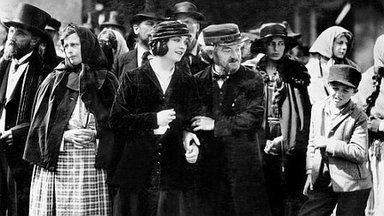
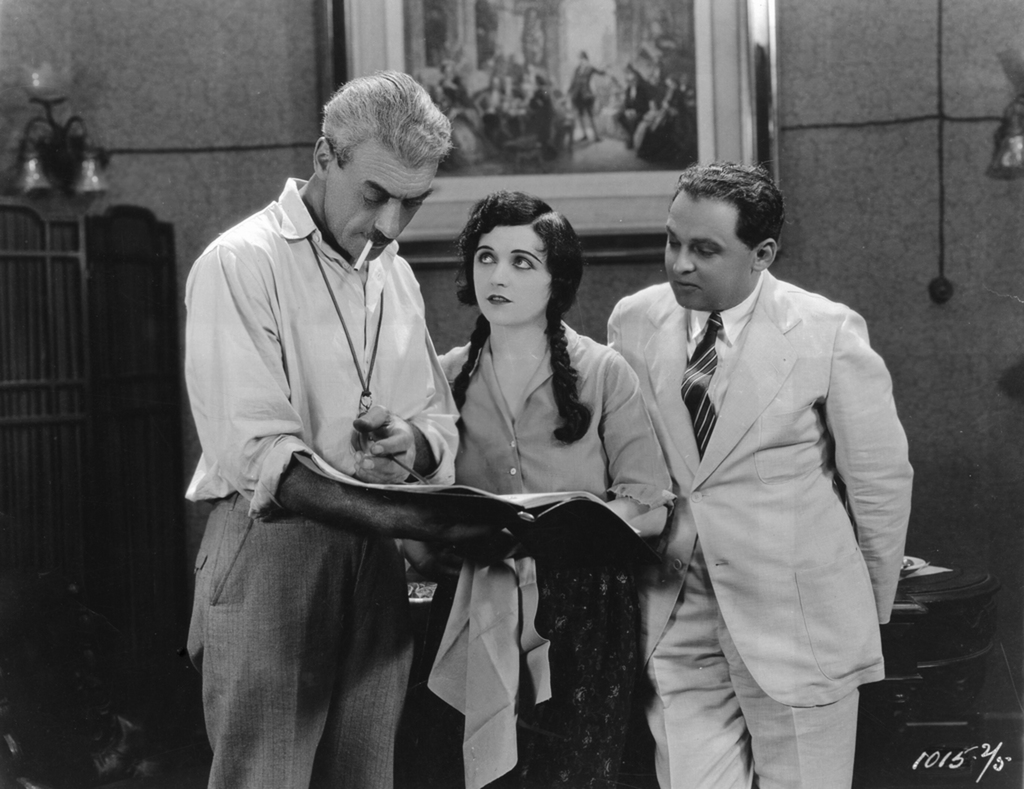
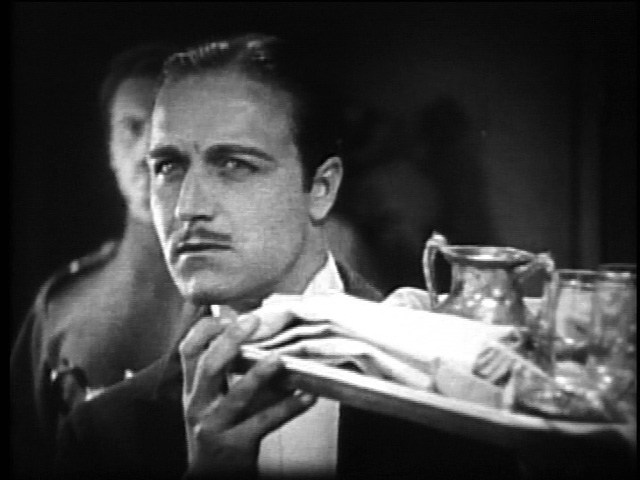
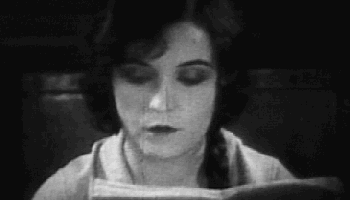
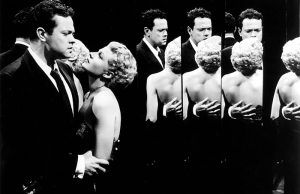
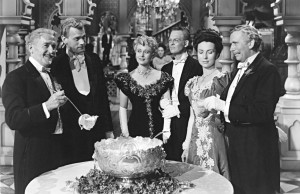
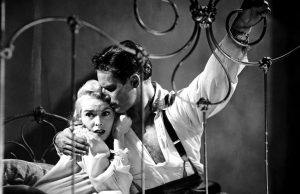






Leave a Reply